
Tumon: The Beating Heart of Guam's Tropical Paradise
Discover Tumon: Guam's vibrant coastal paradise, where pristine beaches, rich culture, and modern delights converge for an unforgettable tropical escape.
Nestled along the western coast of Guam, Tumon is a vibrant hub of activity that offers a perfect blend of natural beauty, rich culture, and modern amenities. Known for its stunning beaches and crystal-clear waters, Tumon is a paradise for beach lovers and water sports enthusiasts. The white sandy shores of Tumon Bay are ideal for swimming, snorkeling, and diving, providing an underwater world teeming with colorful marine life. Beyond its natural allure, Tumon boasts a lively atmosphere with a plethora of dining, shopping, and entertainment options. The main strip, Pale San Vitores Road, is lined with luxury hotels, world-class restaurants, and trendy boutiques, making it a shopper's haven. Visitors can indulge in local Chamorro cuisine, explore bustling night markets, or enjoy a night out at one of the many bars and clubs. Cultural experiences are also abundant in Tumon. The Chamorro Village is a must-visit to experience traditional dance, music, and crafts. Historical sites like the Dulce Nombre de Maria Cathedral Basilica and the Plaza de España offer a glimpse into Guam's rich colonial past. Whether you're seeking adventure, relaxation, or a cultural journey, Tumon has something to offer every traveler.
Local tips in Tumon
- Visit Tumon Bay early in the morning to enjoy the serene waters before the crowds arrive.
- Bring reef-safe sunscreen to protect the marine life while enjoying water activities.
- Explore local night markets for unique souvenirs and delicious street food.
- Rent a car to explore nearby attractions and hidden gems around the island.
- Stay hydrated and carry a refillable water bottle, as the tropical climate can be quite warm.
Neighbourhoods in Tumon
Tumon: The Beating Heart of Guam's Tropical Paradise
Nestled along the western coast of Guam, Tumon is a vibrant hub of activity that offers a perfect blend of natural beauty, rich culture, and modern amenities. Known for its stunning beaches and crystal-clear waters, Tumon is a paradise for beach lovers and water sports enthusiasts. The white sandy shores of Tumon Bay are ideal for swimming, snorkeling, and diving, providing an underwater world teeming with colorful marine life. Beyond its natural allure, Tumon boasts a lively atmosphere with a plethora of dining, shopping, and entertainment options. The main strip, Pale San Vitores Road, is lined with luxury hotels, world-class restaurants, and trendy boutiques, making it a shopper's haven. Visitors can indulge in local Chamorro cuisine, explore bustling night markets, or enjoy a night out at one of the many bars and clubs. Cultural experiences are also abundant in Tumon. The Chamorro Village is a must-visit to experience traditional dance, music, and crafts. Historical sites like the Dulce Nombre de Maria Cathedral Basilica and the Plaza de España offer a glimpse into Guam's rich colonial past. Whether you're seeking adventure, relaxation, or a cultural journey, Tumon has something to offer every traveler.
When is the best time to go to Tumon?
Iconic landmarks you can’t miss
Two Lover’s Point
Discover the legend and beauty of Two Lover’s Point, Guam's iconic cliffside viewpoint with breathtaking ocean views.
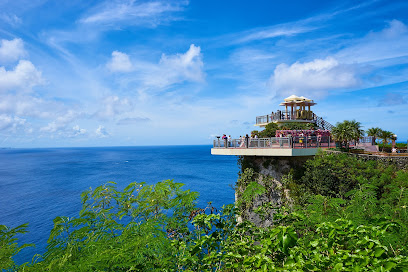
Hilton Guam Resort & Spa
Experience luxury and adventure at Hilton Guam Resort & Spa, the ultimate tropical getaway on Tumon Bay, offering stunning views and world-class amenities.
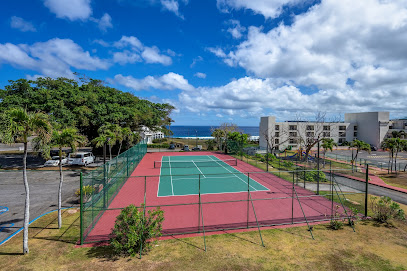
Hyatt Regency Guam
Discover luxury and adventure at Hyatt Regency Guam – a beachfront paradise in Tumon Bay perfect for relaxation and exploration.

Dusit Beach Resort Guam
Experience the ultimate tropical getaway at Dusit Beach Resort Guam, where luxury meets adventure in a stunning beachfront paradise.

Inarajan Natural Pool
Experience the serene beauty of Inarajan Natural Pool, a hidden gem in Guam perfect for swimming, relaxation, and breathtaking views.
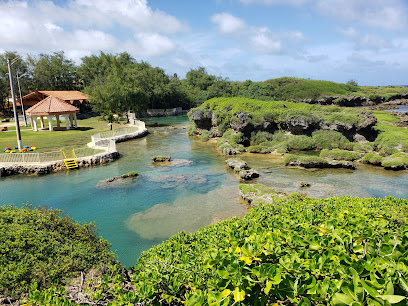
Meskla Dos - Upper Tumon
Experience the vibrant flavors of Guam at Meskla Dos, Upper Tumon’s favorite burger joint offering delicious fast food in a lively atmosphere.
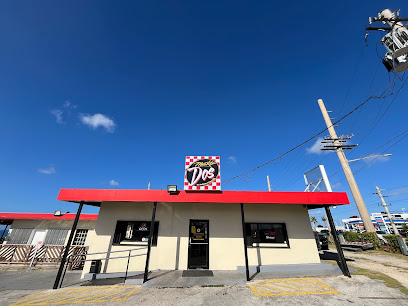
Fish Eye Marine Park - Visitor Center
Explore the breathtaking underwater world at Fish Eye Marine Park, Guam's premier marine attraction, featuring observatories, dining, and cultural performances.
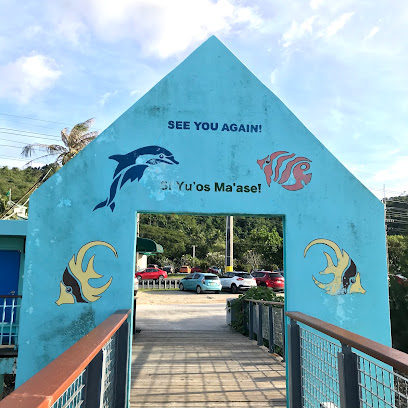
Ypao Beach
Discover the serene beauty of Ypao Beach in Guam, where relaxation meets adventure amidst stunning natural landscapes.

Plaza de España
Explore the rich history and stunning architecture of Plaza de España, a must-see cultural landmark in Hagåtña, Guam.
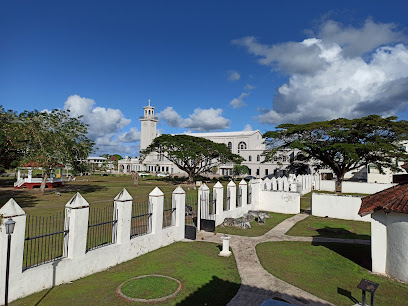
Mosa's Joint
Discover the vibrant flavors of Guam at Mosa's Joint, renowned for its gourmet burgers and lively atmosphere in the heart of Hagåtña.
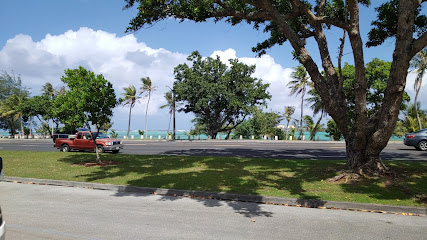
Fort Nuestra Señora de la Soledad
Explore Fort Nuestra Señora de la Soledad, a stunning historical landmark in Guam offering breathtaking views and a glimpse into the past.
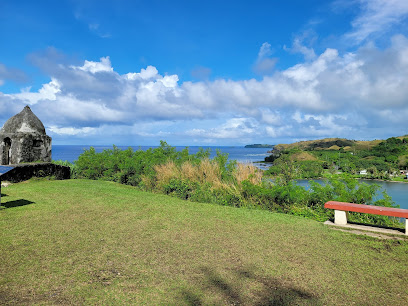
Merizo Pier Park
Experience the natural beauty and cultural richness of Merizo Pier Park, a serene escape on Guam's southern coast.
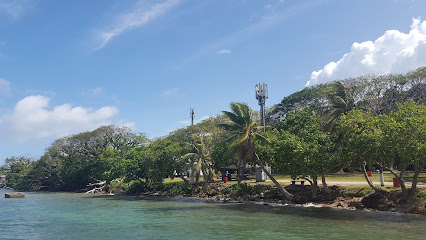
Outback Steakhouse
Indulge in the rich flavors of Australian cuisine at Outback Steakhouse, Tumon’s favorite destination for delicious steaks and warm hospitality.
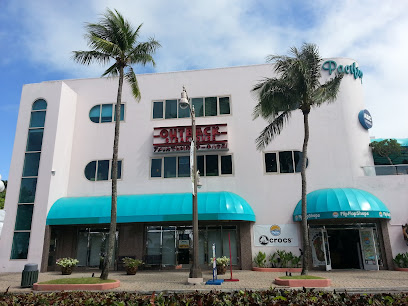
Cetti Bay Overlook
Discover stunning views and serene nature at Cetti Bay Overlook, a breathtaking hiking area in Humåtak, Guam.
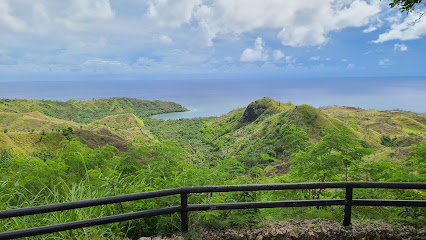
Tumon Beach
Experience the breathtaking beauty of Tumon Beach in Guam, a tropical paradise perfect for relaxation, adventure, and unforgettable memories.
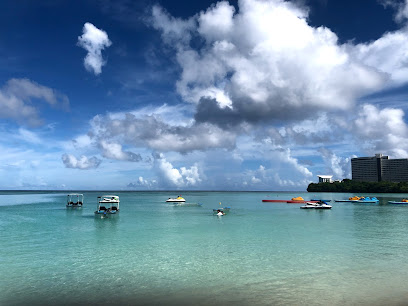
Unmissable attractions to see
Fort Nuestra Señora de la Soledad
Explore the intriguing history and stunning views at Fort Nuestra Señora de la Soledad, Guam's iconic historic site and tourist attraction.

Karera at SandCastle
Discover the enchanting theater production of Karera at SandCastle in Guam, where vibrant culture and captivating performances await you.
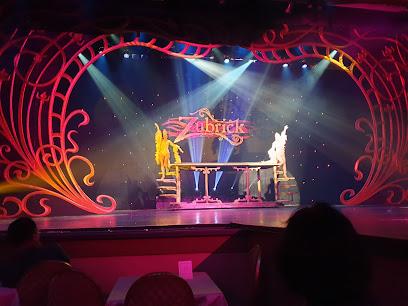
Taotao Tasi Guam
Experience the vibrant culture of Guam at Taotao Tasi, where BBQ delights meet enchanting performances on the beach.
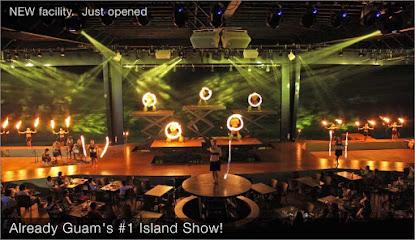
Talo'fo'fo' Falls
Experience the breathtaking beauty of Talo'fo'fo' Falls in Guam, a serene oasis of cascading waters and lush landscapes perfect for nature lovers.
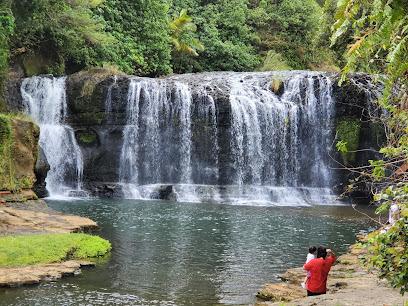
Chamorro Night Market
Immerse yourself in the vibrant Chamorro Night Market, where local flavors, crafts, and culture come together under the stars in Hagåtña, Guam.
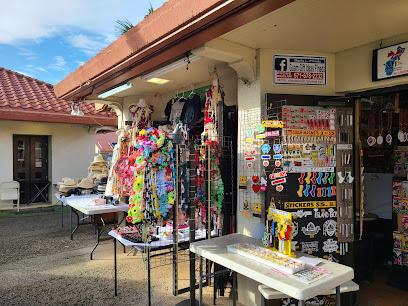
Onward Mangilao Golf Club
Experience the ultimate golfing adventure at Onward Mangilao Golf Club, where stunning ocean views meet lush green fairways in Guam.

Country Club of the Pacific
Experience world-class golf at the Country Club of the Pacific in Yona, Guam, where stunning ocean views meet tropical tranquility.
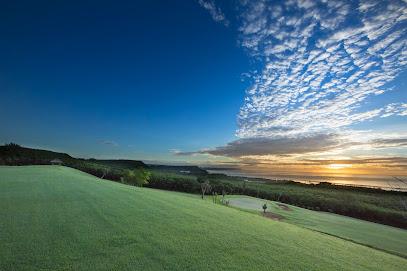
Senator Angel Leon Guerrero Santos Latte Stone Memorial Park
Discover the rich history and cultural heritage of Guam at Senator Angel Leon Guerrero Santos Latte Stone Memorial Park, home to iconic latte stones.
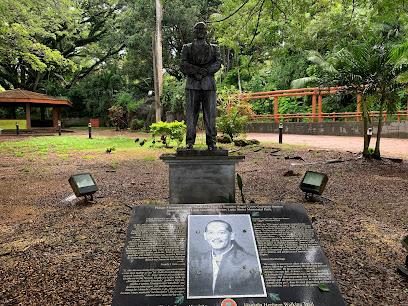
Guam International Raceway
Experience the thrill of speed and competition at Guam International Raceway, the ultimate destination for motorsport lovers in the heart of Yigo.
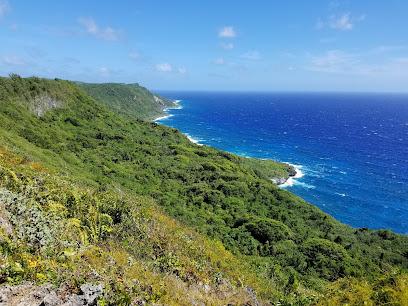
Guam Ocean Park
Discover the captivating marine life and interactive exhibits at Guam Ocean Park, a family-friendly attraction that celebrates the beauty of Guam's underwater world.
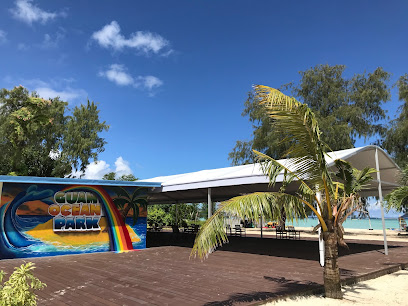
Latte of Freedom
Explore the Latte of Freedom in Guam, a captivating museum that celebrates the Chamorro culture and history with stunning exhibits and iconic latte stones.
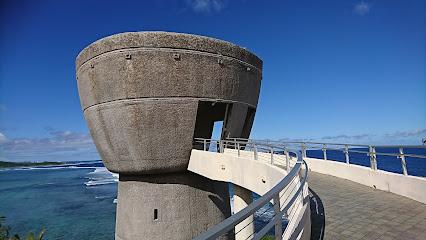
Mount Lamlam Summit
Explore the breathtaking beauty of Mount Lamlam Summit in Guam, the highest point on the island offering stunning views and invigorating hiking trails.
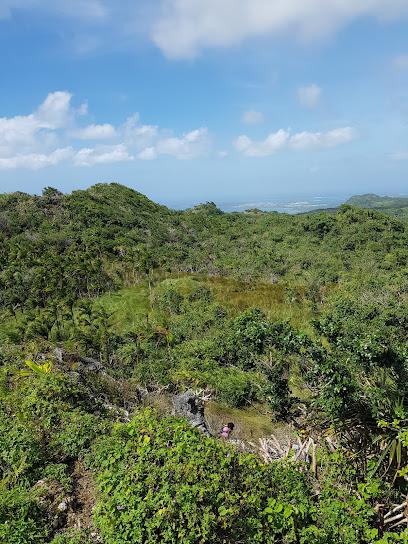
Guam Ocean Adventures
Experience the underwater paradise of Guam with Guam Ocean Adventures, offering unforgettable diving and snorkeling experiences for all skill levels.

Our Lady of Purification Catholic Church
Discover the serene beauty and rich spiritual heritage at Our Lady of Purification Catholic Church in Maina, Guam—a must-visit for every traveler.
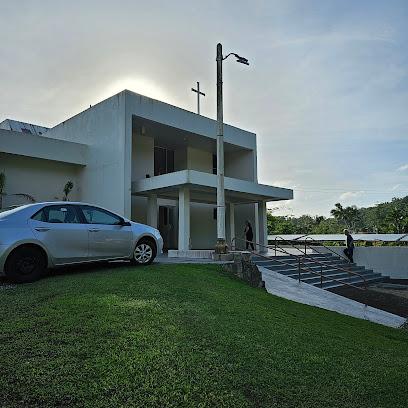
Guam Sunset Cruise Dinner & Dolphin Watching
Sail into the sunset on Guam's stunning cruise, enjoying dinner and dolphin watching for a unique, unforgettable experience.
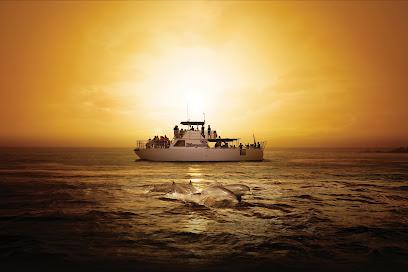
Essential places to dine
Meskla Dos - Upper Tumon
Discover the best hamburgers at Meskla Dos in Upper Tumon - where local flavors meet fast food favorites in a cozy setting.

The Beach Restaurant & Bar Guam
Discover culinary delights at The Beach Restaurant & Bar Guam – where great food meets breathtaking ocean views.
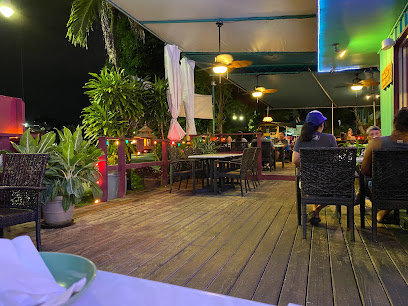
Proa Restaurant
Savor the authentic flavors of Guam at Proa Restaurant, where local cuisine meets exceptional hospitality in Tumon.

Beachin' Shrimp Flame Tree Plaza
Experience fresh seafood delights at Beachin' Shrimp Flame Tree Plaza - where local flavors meet tropical relaxation.

Pika's Cafe
Discover the vibrant flavors of Guam at Pika's Cafe - your go-to spot for delicious breakfasts and lunches in Upper Tumon.
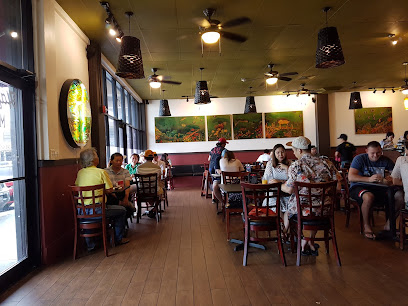
Ban Thai Restaurant
Discover authentic Thai cuisine at Ban Thai Restaurant in Tumon – a must-visit culinary destination offering vibrant flavors and inviting ambiance.
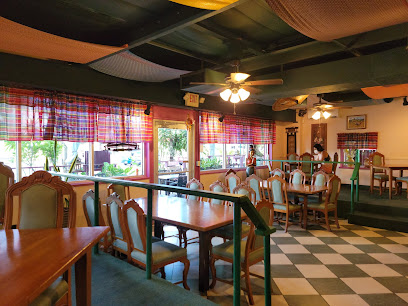
Outback Steakhouse
Experience authentic Australian flavors at Outback Steakhouse in Tumon – where every meal feels like a celebration.
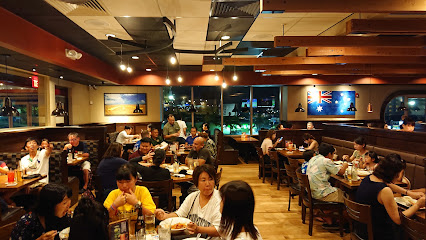
Meskla Dos - Lower Tumon
Experience the best burgers in Tumon at Meskla Dos – where local flavors meet American diner charm.
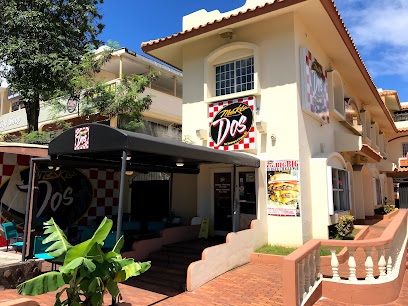
The Kracked Egg
Experience the flavors of Guam at The Kracked Egg - your go-to spot for delicious breakfast and brunch in Tumon.
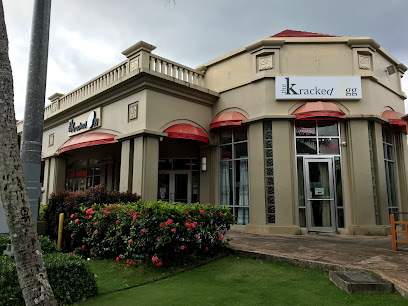
California Pizza Kitchen Tumon
Discover flavorful American cuisine at California Pizza Kitchen Tumon - perfect for family gatherings and pizza lovers in Guam.
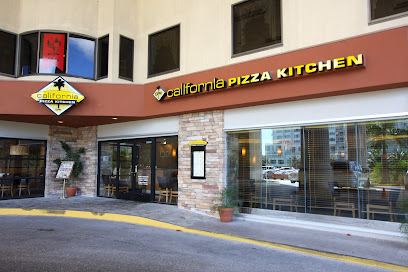
Jamaican Grill
Experience authentic Jamaican cuisine at Jamaican Grill in Tamuning - where flavor meets island culture.
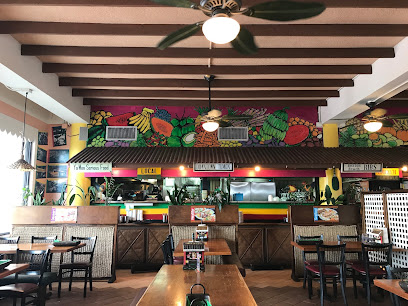
Capricciosa, Pacific Place
Experience authentic Italian flavors at Capricciosa in Tumon, Guam - where delicious cuisine meets warm hospitality.
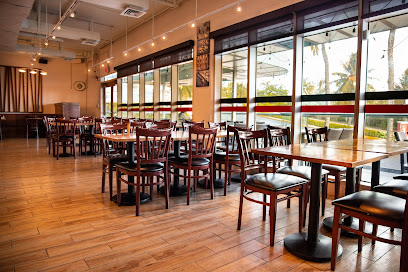
Hard Rock Cafe
Dive into an unforgettable dining experience at Hard Rock Cafe in Guam - where delicious American cuisine meets iconic rock 'n' roll memorabilia.
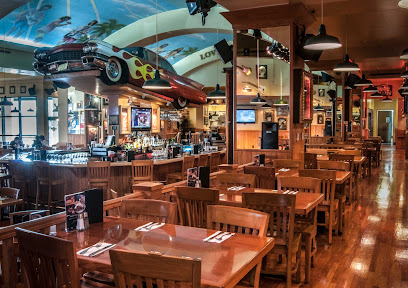
Sakura Kitchen
Experience authentic Japanese flavors at Sakura Kitchen in Tumon, Guam – home to exquisite sushi and traditional dishes.
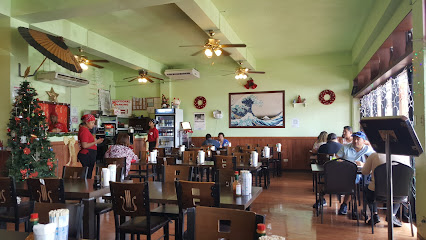
Churrasco Brazilian Steakhouse and Salad Bar
Savor authentic Brazilian cuisine at Churrasco Brazilian Steakhouse with endless grilled meats and a vibrant salad bar in Tumon.

Markets, malls and hidden boutiques
T Galleria By DFS, Guam
Discover luxury and local treasures at T Galleria By DFS, Guam's premier duty-free shopping destination for tourists.
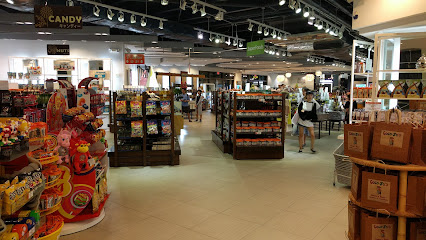
The Plaza Shopping Center
Explore Guam's vibrant shopping scene at The Plaza Shopping Center, where luxury meets local charm in a tropical paradise.
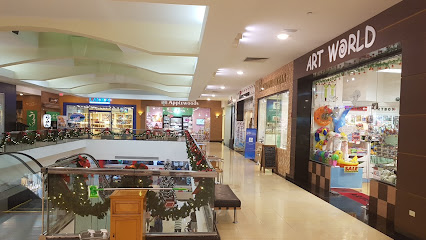
Tumon Sands Plaza
Shop, dine, and unwind at Tumon Sands Plaza, Guam's premier shopping destination with a blend of local charm and international flair.
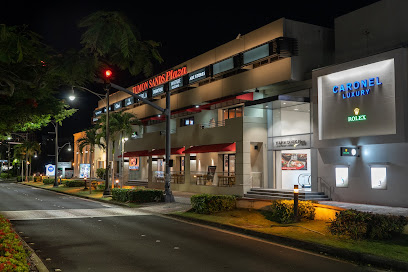
Acanta Mall
Explore Acanta Mall in Tumon, Guam - your ultimate shopping destination for local and international brands, dining, and entertainment in a tropical paradise.
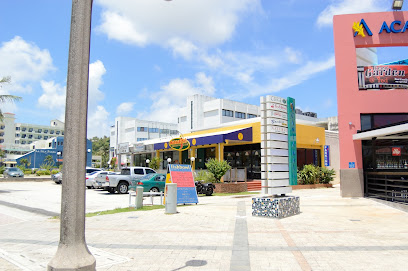
Keepsakes by K
Explore Keepsakes by K in Upper Tumon, Guam, your ultimate destination for scrapbooking and craft supplies that inspire creativity and memory-making.
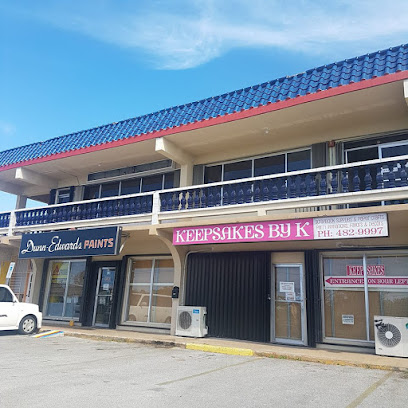
I LOVE CHOCOLATE OUTLET
Discover the sweetest gift shop in Tumon, Guam, offering an irresistible selection of chocolates and unique souvenirs for every visitor.
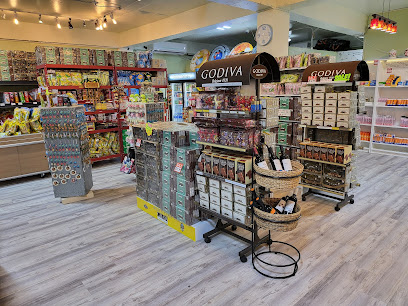
Stussy
Discover Stussy in Tumon Bay, Guam - your ultimate destination for trendy streetwear and unique island-inspired fashion.
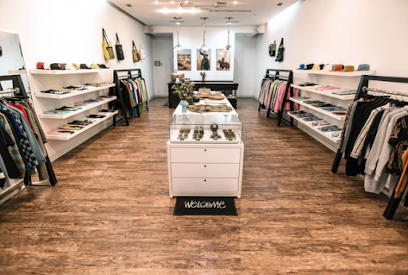
GIFT GUAM
Discover the vibrant culture of Guam through unique souvenirs and local handicrafts at Gift Guam in Tumon.
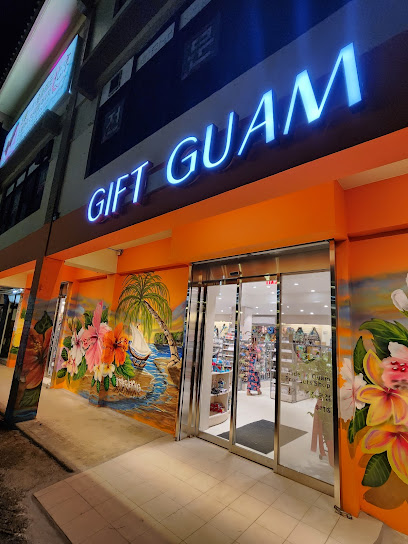
Fokai Shop HQ
Discover unique fashion at Fokai Shop HQ in Tumon, where local styles meet contemporary trends for an unforgettable shopping experience.
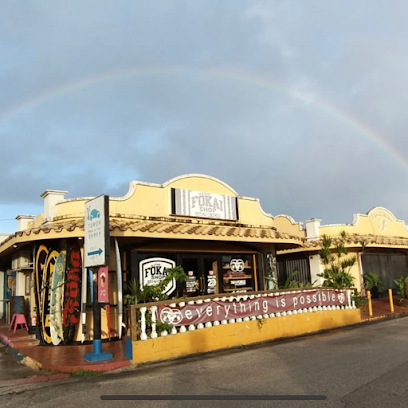
Hot Box Smoke Shop
Explore Hot Box Smoke Shop in Tumon for premium tobacco products and an unforgettable local shopping experience.
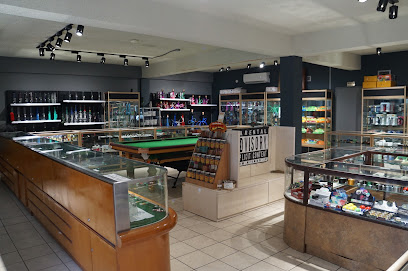
Smart Town
Explore Smart Town in Upper Tumon, Guam for unique gifts, music accessories, and school supplies – a shopping haven for every traveler.
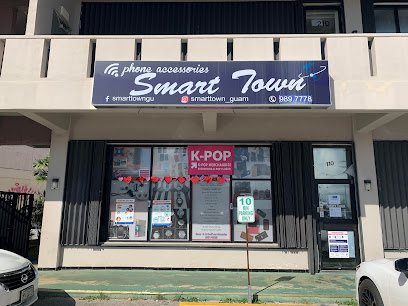
JP Store
Discover fashionable clothing and unique accessories at JP Store in Tumon, Guam – your ultimate shopping destination during your island adventure.
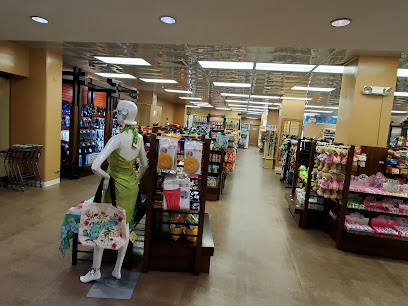
Gucci - The Plaza
Experience luxury shopping at Gucci - The Plaza in Tumon, Guam, with exclusive fashion for men, women, and children in an elegant atmosphere.
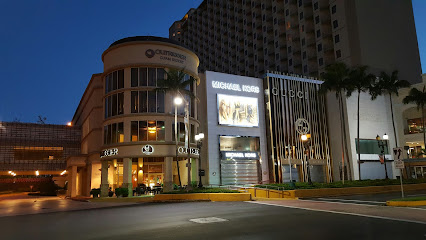
Loco Boutique
Discover stylish swimwear and beach apparel at Loco Boutique in Tumon, Guam, the perfect stop for your tropical getaway wardrobe.
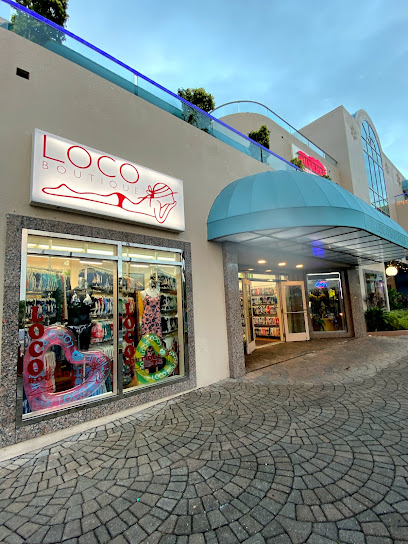
Guam Cultural Center
Explore Guam's rich culture at the Guam Cultural Center, where authentic local gifts and vibrant stories await every traveler.

Essential bars & hidden hideouts
The Beach Restaurant & Bar Guam
Discover the flavors of Guam at The Beach Restaurant & Bar, where culinary delights meet stunning ocean views and a vibrant atmosphere.
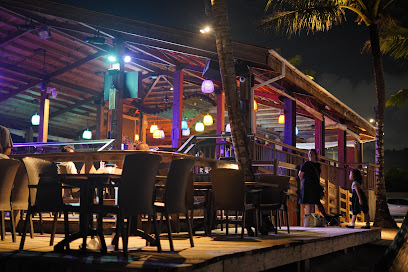
Green Lizzard Tiki Bar
Discover the tropical paradise of Green Lizzard Tiki Bar in Guam, where vibrant drinks and live music create unforgettable nightlife experiences.
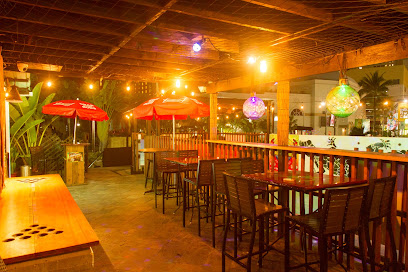
Porky's
Discover the vibrant nightlife of Guam at Porky's, a lively bar in Tumon offering delicious drinks and a welcoming atmosphere.
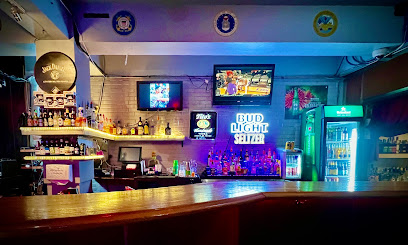
Shamrocks Sports Pub
Discover Shamrocks Sports Pub in Tumon, Guam, where great food, drinks, and lively entertainment come together for an unforgettable experience.
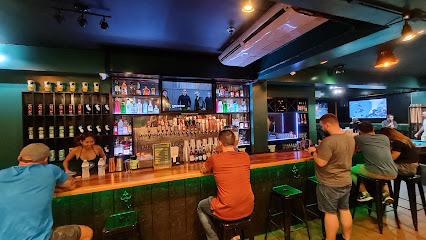
Tree Bar
Experience the vibrant atmosphere and stunning ocean views at Tree Bar, the ultimate tropical escape in Tumon, Guam.
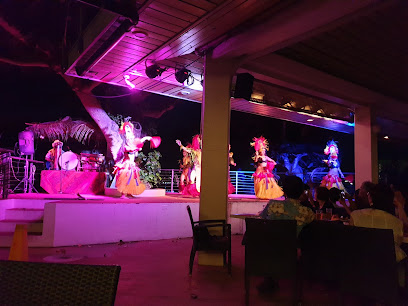
Drop
Discover a vibrant nightlife at Drop, Tumon's premier lounge, featuring creative cocktails and a lively atmosphere perfect for tourists.
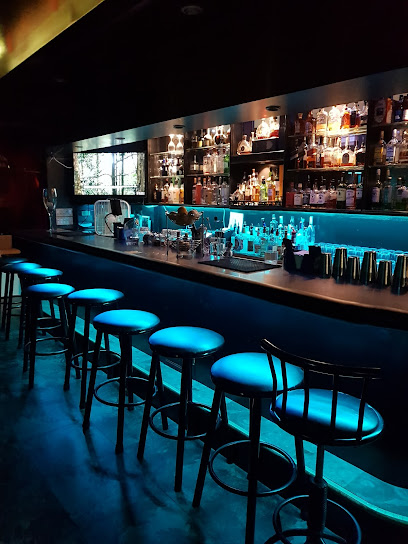
Old Traditions
Discover the vibrant nightlife of Guam at Old Traditions Bar, where great drinks and lively entertainment await every visitor.
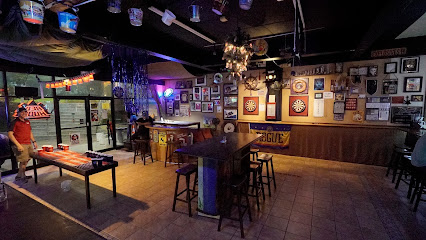
Tabu Tiki Bar
Experience the tropical charm of Guam at Tabu Tiki Bar, where refreshing cocktails and stunning beach views create unforgettable memories.
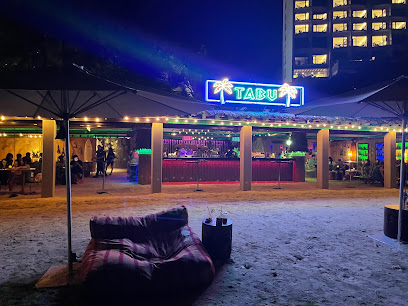
Mins Bar Guam | Music Karaoke Box and Shot Bar | Tumon Guam
Experience the ultimate karaoke and nightlife adventure at Mins Bar in Tumon, Guam - where every night is a celebration of music and fun.
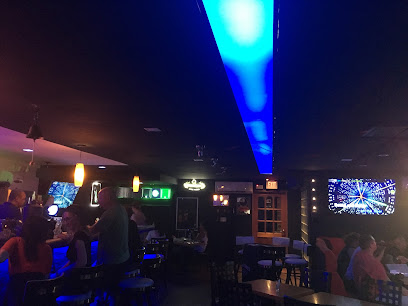
Bambu Bar
Experience the tropical charm of Bambu Bar in Tumon, Guam, with refreshing cocktails, a vibrant atmosphere, and stunning beach views.
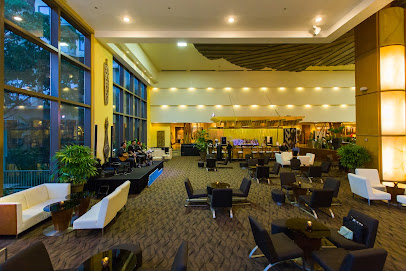
Livehouse
Experience the vibrant nightlife of Guam at Livehouse, a lively bar in Tumon offering great drinks, music, and a welcoming atmosphere.
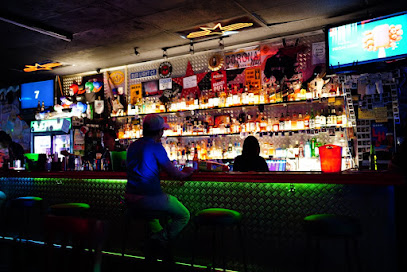
Abandon Ship Tumon (temporarily closed)
Experience the vibrant nightlife of Guam at Abandon Ship Tumon, a lively bar featuring live music, dancing, and a welcoming atmosphere.
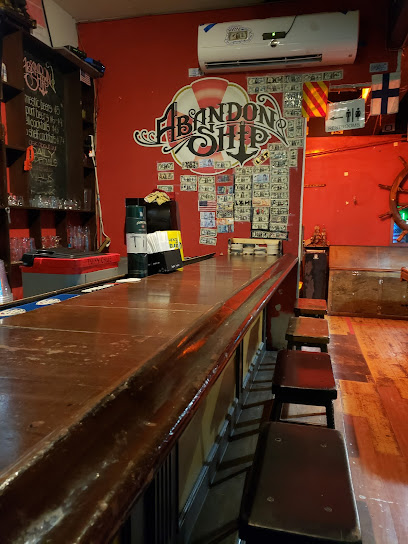
Lava Lounge
Experience the vibrant nightlife at Lava Lounge, Guam's top karaoke bar, where singing and socializing come together in a lively atmosphere.
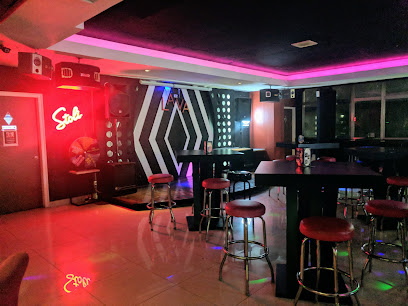
Melting Point, Guam
Experience the vibrant nightlife at Melting Point, Guam's premier bar and lounge, offering exquisite cocktails and a lively atmosphere for all.
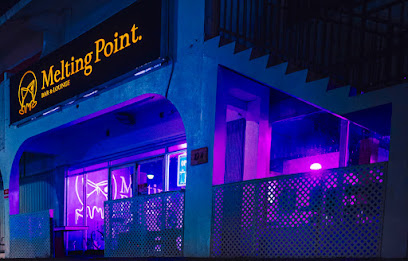
Misty's Beach Bar
Discover the ultimate beachside retreat at Misty's Beach Bar in Guam, offering stunning views, delectable food, and refreshing drinks.
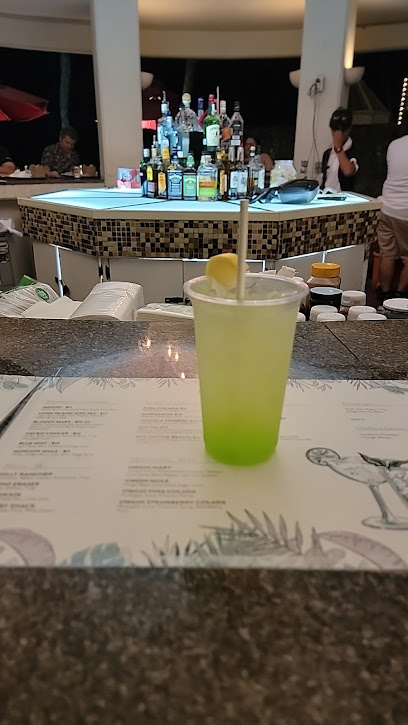
Local Phrases
-
- HelloHafa Adai
[HAH-fuh ah-DIE] - GoodbyeAdios
[ah-DYOS] - YesHao
[HOW] - NoTi
[TEE] - Please/You're welcomePor Favor
[pohr fah-VOR] - Thank youSi Yu'us Ma'åse
[SEE yoo-OOS mah-AH-seh] - Excuse me/SorryDispensa
[dees-PEN-sah] - How are you?Cómo estás?
[KOH-moh ehs-TAHS] - Fine. And you?Maolek. Yan kumusta?
[mah-OH-lek. yahn koo-MOO-stah] - Do you speak English?Kao un tungo inglés?
[KOW oon TOON-goh een-GLEHS] - I don't understandTi hu tungo
[TEE hoo TOON-goh]
- HelloHafa Adai
-
- I'd like to see the menu, pleaseLao'la' i menu, por favor
[LAH-oh-lah ee MEH-noo, pohr fah-VOR] - I don't eat meatTi hu kana karne
[TEE hoo KAH-nah KAR-neh] - Cheers!Biba!
[BEE-bah] - I would like to pay, pleaseHu na'fanhåna', por favor
[hoo nah-fahn-HAH-nah, pohr fah-VOR]
- I'd like to see the menu, pleaseLao'la' i menu, por favor
-
- Help!Ayuda!
[ah-YOO-dah] - Go away!Låo!
[LAH-oh] - Call the Police!Tåma' i polisia!
[TAH-mah ee poh-LEE-see-yah] - Call a doctor!Tåma' i doktu!
[TAH-mah ee DOHK-too] - I'm lostHa na'ågu
[hah nah-AH-goo] - I'm illHu na'ånai
[hoo nah-AH-nai]
- Help!Ayuda!
-
- I'd like to buy...Lao'la' i kompra...
[LAH-oh-lah ee kohm-PRAH] - I'm just lookingHåyi ya-hu hanao
[HAH-yee yah-hoo HAH-now] - How much is it?Kåm mungnga?
[kam MOONG-ngah] - That's too expensiveMungnga ya-mu
[MOONG-ngah yah-moo] - Can you lower the price?Mungnga ha'ani?
[MOONG-ngah hah-AH-nee]
- I'd like to buy...Lao'la' i kompra...
-
- What time is it?Kåo na tiempon?
[KAM noh tee-EM-pohn] - It's one o'clockMunga i na'taotao
[MOONG-gah ee nah-TAO-tao] - Half past (10)Nimiti (10)
[nee-MEE-tee] - MorningMaga'åga
[mah-gah-AH-gah] - AfternoonAftot
[AHF-toht] - EveningAtadu
[ah-TAH-doo] - YesterdayNinanåyu
[nee-nah-NYOO] - TodayI hasso
[ee HAH-soh] - TomorrowMaga'håga
[mah-gah-HAH-gah] - 1Munga
[MOONG-gah] - 2Dos
[dohs] - 3Tris
[treess] - 4Kwåtro
[KWAH-troh] - 5Sinko
[SEEN-koh] - 6Sais
[sa-EESS] - 7Siette
[SYET-teh] - 8Ocho
[OH-choh] - 9Nweve
[NWEH-veh] - 10Dies
[dyess]
- What time is it?Kåo na tiempon?
-
- Where's a/the...?I fina' hao...?
[ee fee-NAH how] - What's the address?Kåo i direksion?
[KAM ee dee-rek-SYON] - Can you show me (on the map)?Mungnga ha'ani (gi mapan)?
[MOONG-ngah hah-AH-nee (gee mah-PAHN)] - When's the next (bus)?Kåo i ina' (bus)?
[KAM ee een-AH (boos)] - A ticket (to ....)Un bilete (para ....)
[oon bee-LEH-teh (PAH-rah)]
- Where's a/the...?I fina' hao...?
History of Tumon
-
Tumon Bay has been inhabited by the Chamorro people for over 4,000 years. The ancient Chamorros were known for their advanced seafaring skills and complex society. Archaeological findings, such as latte stones, which are unique pillar structures, provide insight into their way of life.
-
In 1521, Ferdinand Magellan arrived in Guam, marking the beginning of Spanish influence. By 1668, Spanish missionaries had established a presence in Tumon, leading to the spread of Catholicism and significant cultural changes. Tumon became a strategic point during Spain's colonization of the Mariana Islands.
-
During World War II, Tumon was occupied by Japanese forces from 1941 to 1944. The area witnessed significant military activity and was a site of numerous battles. Liberation came on July 21, 1944, when American forces reclaimed the island, an event commemorated annually as Liberation Day.
-
After World War II, Tumon transformed rapidly. The U.S. military presence spurred economic growth, leading to the development of infrastructure, including roads and buildings. Tumon Bay became a popular destination for American service members and their families.
-
The 1970s marked the beginning of Tumon's tourism boom. Hotels, resorts, and entertainment complexes began to spring up along Tumon Bay. The area became known for its beautiful beaches, vibrant nightlife, and duty-free shopping, attracting visitors from around the world, especially Japan and Korea.
-
In recent years, there has been a strong movement to preserve Chamorro culture and heritage in Tumon. Efforts include the establishment of cultural centers, traditional dance performances, and language revitalization programs. These initiatives aim to celebrate and sustain the rich history of the indigenous people.
Tumon Essentials
-
Tumon is located on the western coast of Guam, a U.S. territory in the Pacific Ocean. The main gateway to Guam is the Antonio B. Won Pat International Airport (GUM), located just a few kilometers from Tumon. Direct flights to Guam are available from major cities in Japan, South Korea, the Philippines, and Hawaii. From the airport, you can reach Tumon by taxi, which takes approximately 10 minutes.
-
Tumon is a relatively small area, and many attractions are within walking distance. For longer distances, taxis are readily available and can be hailed on the street or booked via phone. Public buses also operate in Tumon, providing a cost-effective way to explore the area. Rental cars are an option for those who prefer to travel at their own pace, with several car rental agencies available at the airport and in Tumon.
-
The official currency in Guam is the U.S. Dollar (USD). Credit cards are widely accepted in hotels, restaurants, and shops in Tumon. ATMs are plentiful, and you can withdraw cash using internationally recognized credit and debit cards. It is advisable to carry some cash for small purchases and in case you visit areas where card payments are not accepted.
-
Tumon is generally considered a safe destination for tourists. However, it is advisable to exercise standard precautions. Avoid walking alone at night in less populated areas and keep your belongings secure. While Tumon does not have high-crime rates specific to tourists, staying vigilant and aware of your surroundings is always recommended.
-
In case of emergency, dial 911 for immediate assistance. Tumon has local police stations and medical facilities available. It is recommended to have travel insurance that covers medical emergencies. Pharmacies are available in Tumon where you can purchase over-the-counter medications for minor health issues.
-
Fashion: Do dress comfortably, but avoid overly revealing clothing in public areas. Religion: Do respect local religious customs, particularly if visiting churches or religious sites. Public Transport: Do be polite and considerate to other passengers. Don't eat or drink on public transport. Greetings: Do greet people with a friendly hello or wave. A smile goes a long way. Eating & Drinking: Do try local Chamorro dishes and accept hospitality graciously. Don't refuse food or drink offerings as it can be considered impolite.
-
To experience Tumon like a local, visit the night markets where you can enjoy local cuisine and purchase handmade crafts. Engage with the locals, who are known for their hospitality and willingness to share their culture. Don't miss visiting the beautiful Tumon Beach, where you can relax, swim, and partake in various water sports. For a unique experience, explore the underwater world at Fish Eye Marine Park. Also, try to catch a cultural show to learn more about Chamorro traditions.
Trending Landmark in Tumon
-
Two Lover’s Point
-
Hilton Guam Resort & Spa
-
Hyatt Regency Guam
-
Dusit Beach Resort Guam
-
Inarajan Natural Pool
-
Meskla Dos - Upper Tumon
-
Fish Eye Marine Park - Visitor Center
-
Ypao Beach
-
Plaza de España
-
Mosa's Joint
-
Fort Nuestra Señora de la Soledad
-
Merizo Pier Park
-
Outback Steakhouse
-
Cetti Bay Overlook
-
Tumon Beach
Nearby Cities to Tumon
-
Things To Do in Tamuning
-
Things To Do in Dededo
-
Things To Do in Hagåtña
-
Things To Do in Sinajana
-
Things To Do in Mangilao
-
Things To Do in Agana Heights
-
Things To Do in Yigo
-
Things To Do in Santa Rita
-
Things To Do in Agat
-
Things To Do in Koblerville
-
Things To Do in Saipan
-
Things To Do in Kagman
-
Things To Do in Garapan
-
Things To Do in Capital Hill
-
Things To Do in San Roque













